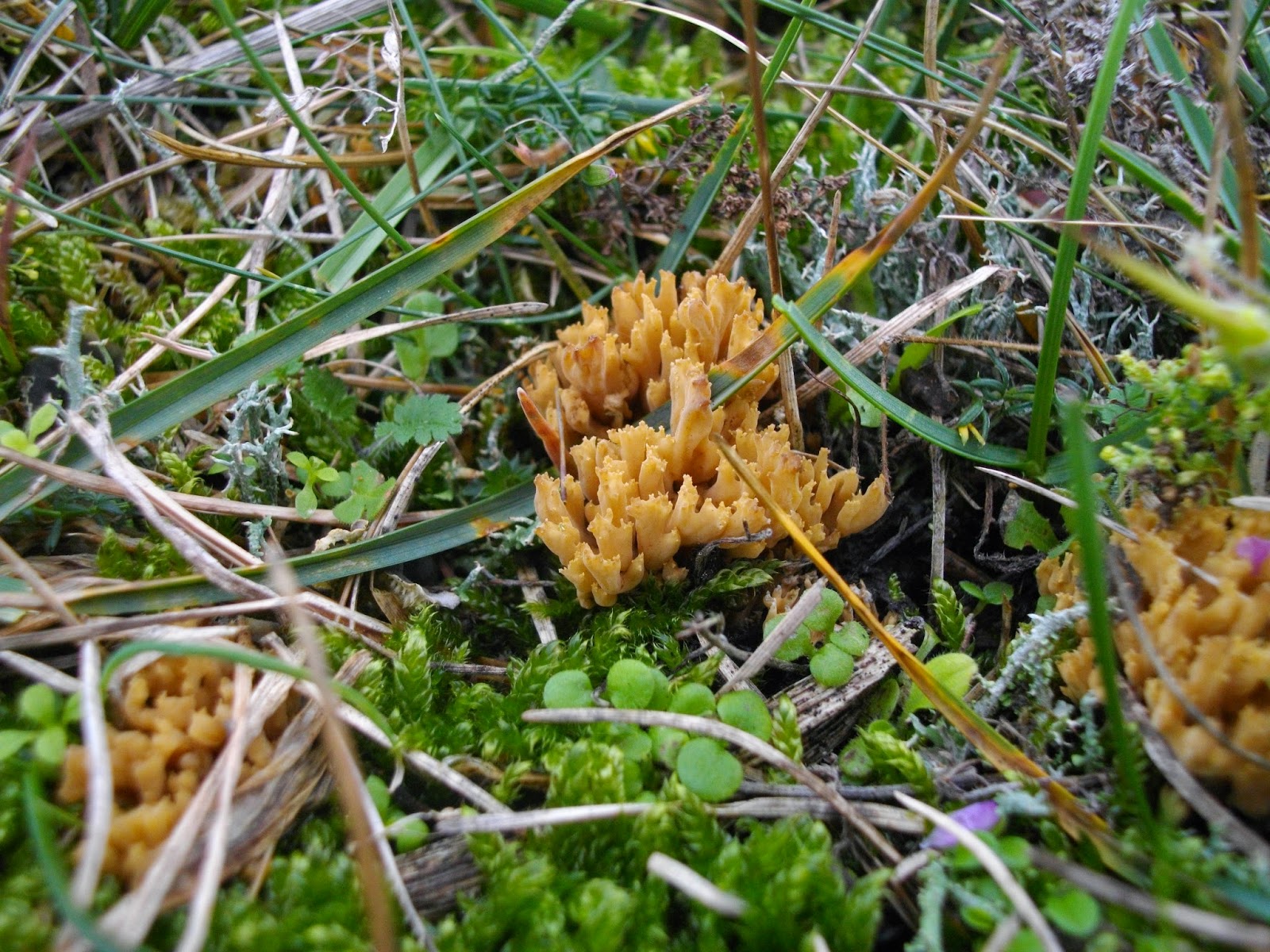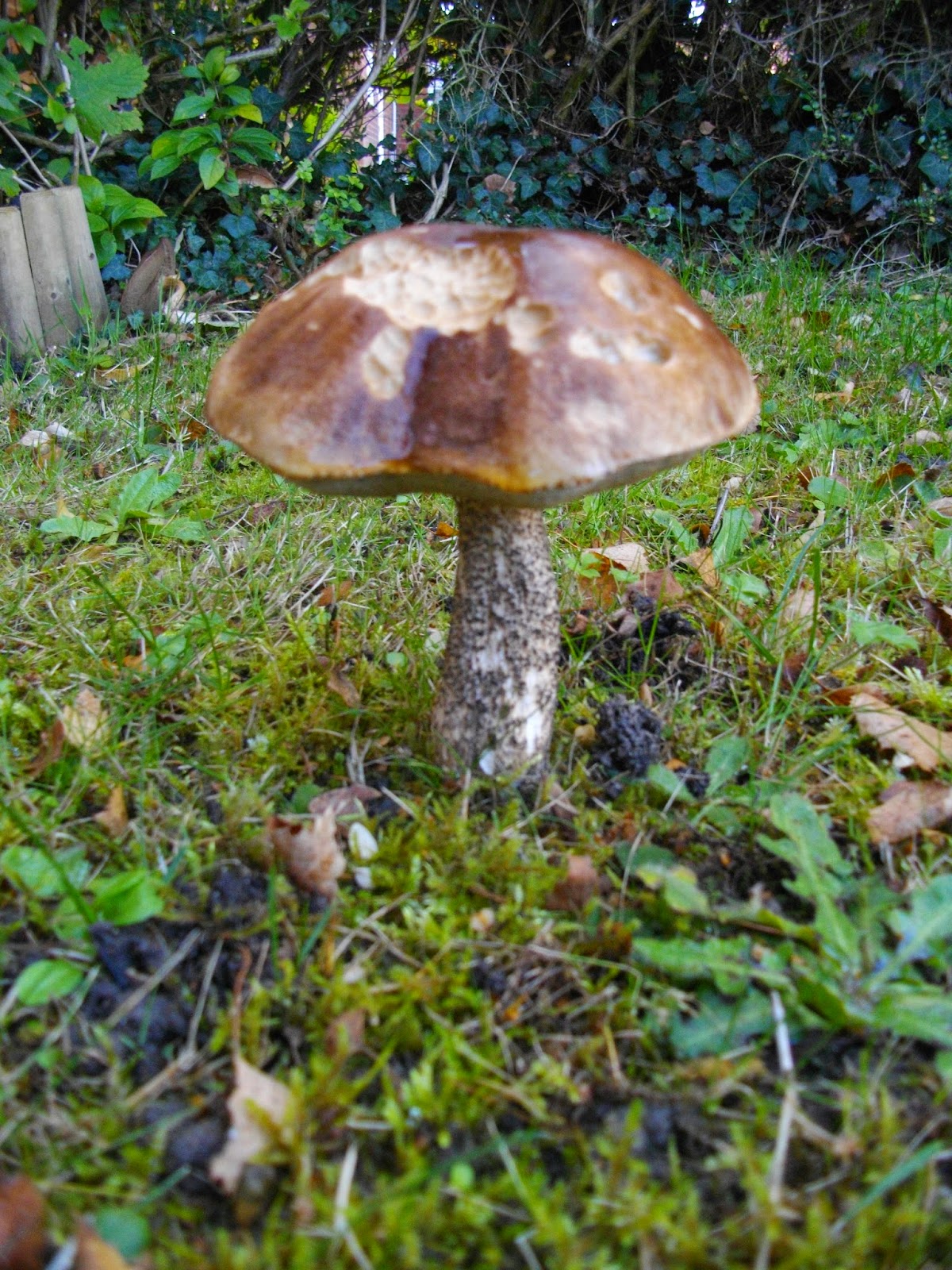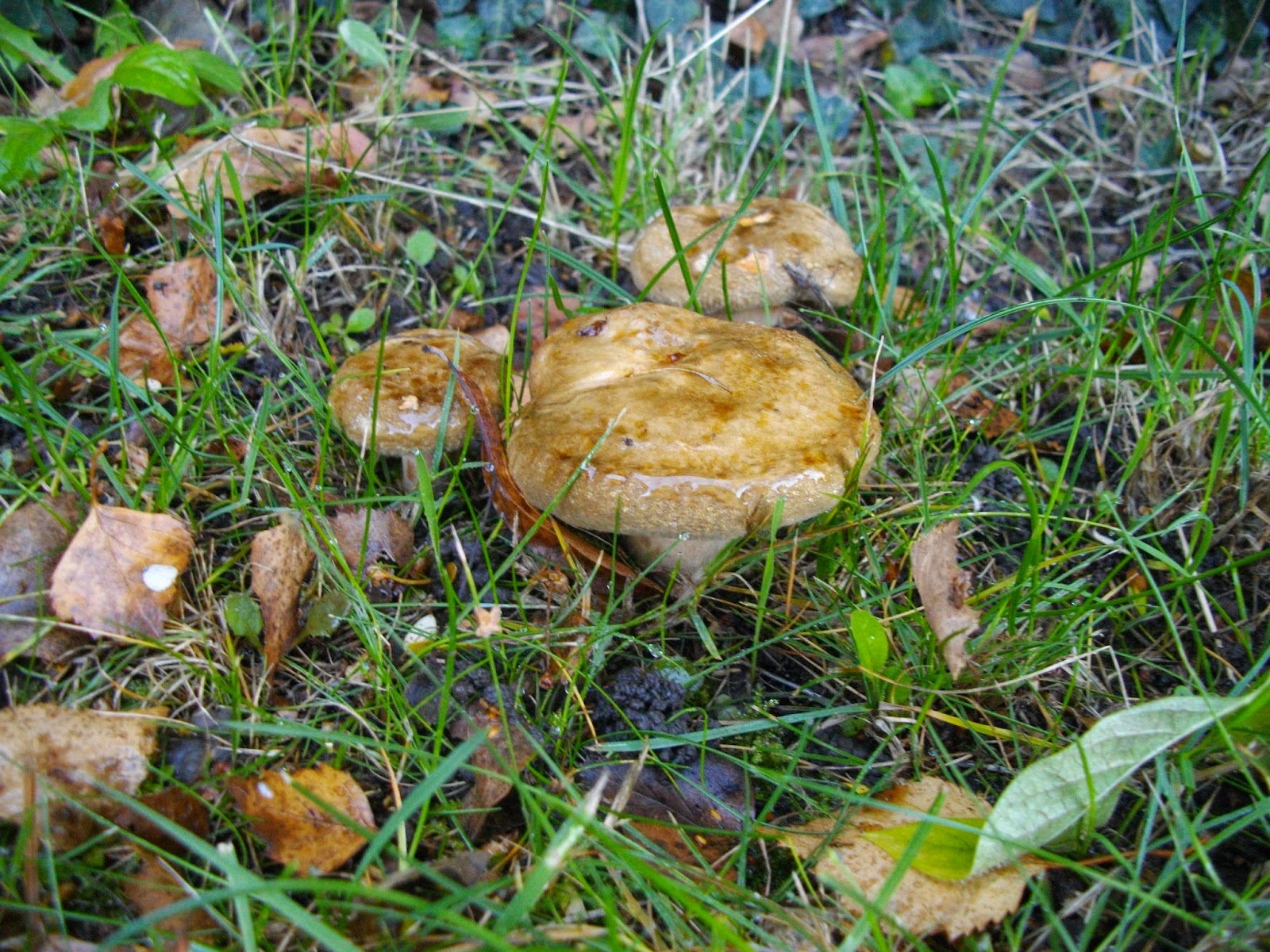26th October 2014
At the start of the year when I was coming up with my target species for the year there were quite a few fungi, and in the end I settled up with a few either/or species. Several of the ones that I hadn't seen can be found at Holme Dunes NWT reserve, where this year Rob Smith and a group of local naturalists have been putting in a concerted recording effort. So far they have recorded over 2000 species between them, and the blog of their exploits is well worth a read - it can be found here. Anyway, Rob had very kindly offered to show me some of the dune specialties that I hadn't seen, and in return I hoped to identify some new species for their list.
I arrived at Holme just before 10:30 to find Rob, Andy and Adrian waiting for me at the visitors centre. After introductions we headed off for the pines to see what we could find. My first target was Scaly Stalkball, a relative of the Winter Stalkball that I had seen in February. On the way we stopped to admire an array of Collared Earthstars (Geastrum triplex), lots of Milky Bonnets (Hemimycena lactea) and a Hare's Ear (Otidea onotica). Emerging from the pines we puzzled over a couple of interesting bracket fungi and saw Snowy, Dune and Blackening Waxcaps (Hygrocybe virginea, conicoides and conica). Before moving on we inspected some Rabbit pellets for nail fungi without success, before arriving at the Scaly Stalkballs (Tulostoma melanocyclum).
Now into the dunes, we were looking for Dune Stinkhorn (Phallus hadriani). A stick marked the spot, but where was the fungus? It was still there, but it had been completely dessicated ("well it is a cold day" was muttered!) We carried on, seeing many more Dune Waxcaps and then another couple of sand specialists, Dune Cavalier (Melanoleuca cinerifolia) and Dune Brittlestem (Psathyrella ammophila) before heading back to the pines. Here we met Karla, who had just photographed a coral fungus. She offered to show us, and we went and had a look. It was small and beige, beneath the pines and the tips discoloured a blue/green, which I believe makes it Ramaria abietina. Nearby we also saw a few Sessile Earthstars and some Liver Milkcaps (Lactarius hepaticus), the milk of which discoloured bright yellow on white tissue.
After a quick bite to eat we went out into the west dunes, walking past a clump of Inocybe sp. We soon located the other species I had particularly wanted to see, Sea Buckthorn Bracket (Phellinus hippophaeicola). Several other species were seen along the path, including a rather out-of-place Collared Earthstar, before I spotted another species of Coral sp. growing amongst the short-cut grass. There were no nearby trees, and this one had brown tips to the branches. A couple of Blackening Waxcaps that were completely black were nice to see, and we also saw a numerous yellowy 'toadstool' type growing in marshy grassland that we couldn't identify. The last fungus of the day was a new one for me - Field Bird's Nest (Cyathus olla) - previously I had only seen Common Bird's Nest.
Many thanks to Rob, Andy, Adrian and Karla for the time, company and local knowledge, which contributed to an excellent days mycology.
































